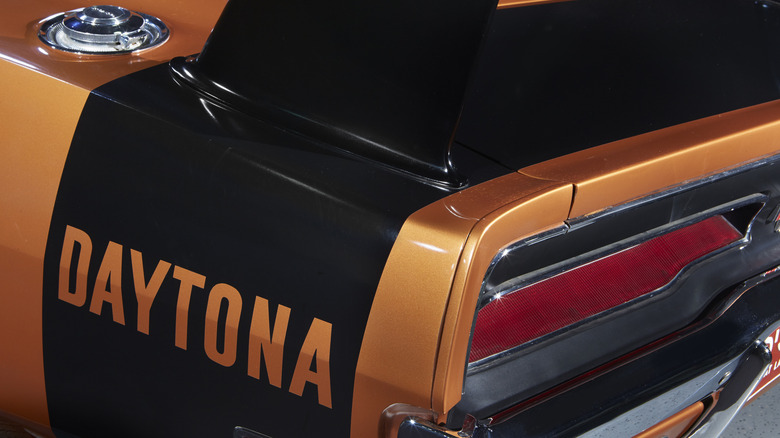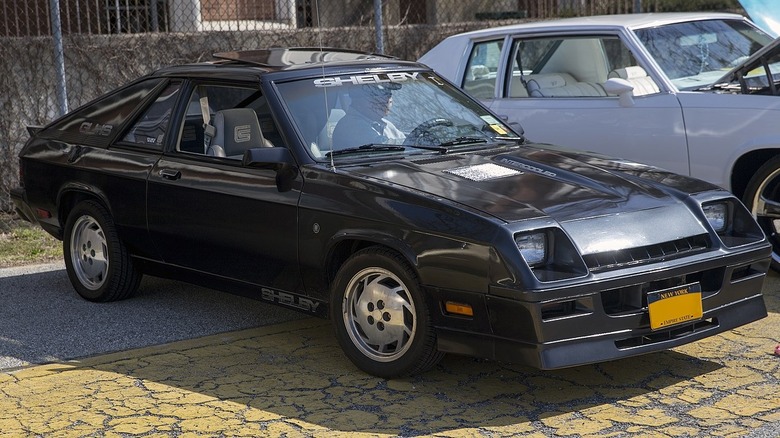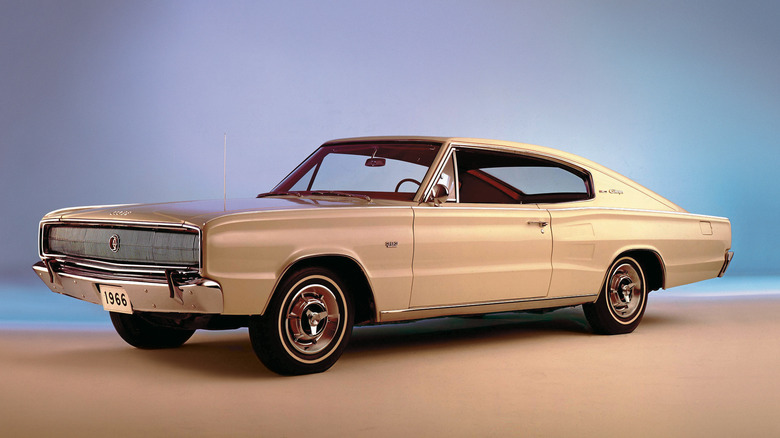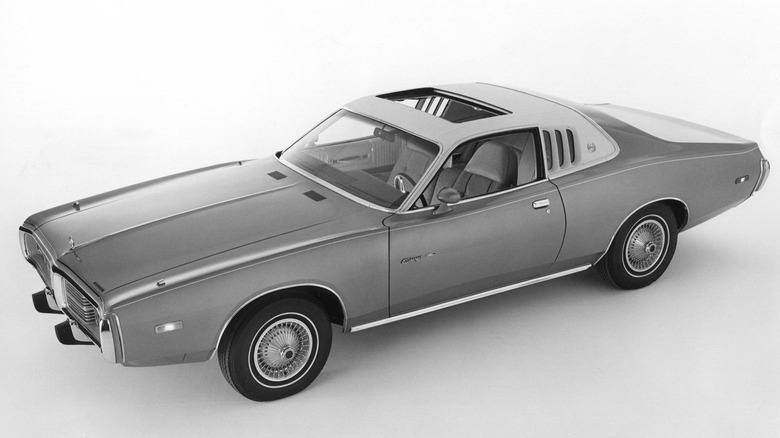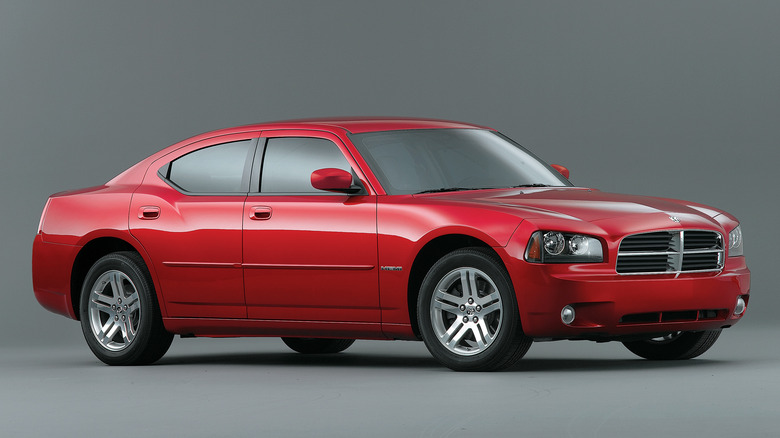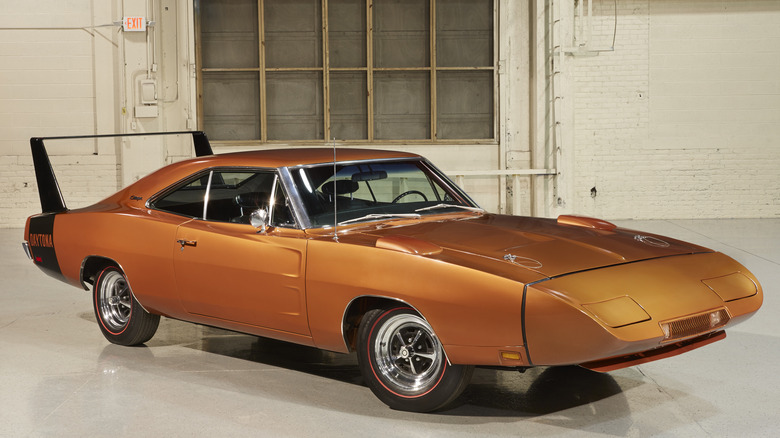The Top 5 Best Dodge Chargers Ever Made, Ranked
Since it was introduced to the motoring public in 1966, there have been no less than seven different generations of Dodge vehicles bearing the iconic Charger nameplate. Gearheads have watched the Charger morph from a muscle car to a malaise-era luxo-barge to a front-wheel drive hot hatch in the 1980s.
This year marks the end of the Dodge Charger as we know it, along with its Challenger sibling. Sure, the badge may live on in electrified form as the Charger Daytona SRT, perhaps even surpassing the performance of internal-combustion powered Charges of past and present, but it won't be the same. The Charger EV has a 126-decibel fake exhaust note, for Pete's sake. What's next, a fake flip-top gas cap for plugging in the charger?
The Charger has been a lot of things to a lot of folks over its long career, so the transition to electric really isn't that shocking. Ranked below are what we think represents the best of the breed so far.
5. 1987 Shelby Charger GLH-S
When Lee Iacocca, the former president of Ford, jumped ship over to Chrysler in 1978, it didn't take long for Iacocca to persuade his good friend, tuner and former racing driver Carroll Shelby, into coming along for the journey. The first vehicle born from this relationship was the 1983 Dodge Shelby Charger, which primarily had a modified suspension system and sportier styling versus the standard Charger, which by now had transformed into a front-wheel drive subcompact hatchback.
Although the initial emphasis wasn't on horsepower, that would gradually shift with the addition of a turbocharger to the Shelby Charger's 2.2-liter four-cylinder in 1985. With the Shelby Charger ending production in 1987, the final 1,000 vehicles were shipped directly to Carroll Shelby's facility in California to be transformed into the Charger GLH-S, which stands for "Goes Like Hell" (yes, seriously).
The star attraction of the Charger GLH-S was a larger turbocharger, fed by an aluminum air-to-air intercooler. Just for good measure, the little four-cylinder also got a new ported cylinder head and intake manifold. The GLH-S cranked out 175 horsepower versus 146 horsepower in the standard Shelby Charger. Handling and braking components were also tweaked, including a set of bespoke Shelby alloy wheels. Like its contemporary, the Buick Grand National, the GLH-S was only available in black, with special Shelby emblems supplanting their Dodge counterparts inside and out.
[Featured image by Mr.choppers via Wikimedia Commons | Cropped and scaled | CC BY-SA 3.0]
4. 1966 Dodge Charger Street Hemi
The first-year 1966 Charger was Dodge's entry in the rapidly escalating pony and muscle car wars. Although based on Dodge Coronet underpinnings, the Charger had radical fastback styling that was so trendy at the time, following the lead of the Ford Mustang, AMC Rambler Marlin, and others. The front end featured a continuous full-width grill with electrically concealed headlights, sometimes referred to as the "electric shaver" grill. The rear fascia received a similar treatment with a full-width taillight panel with Charger lettering.
The Charger's cabin was just as futuristic as the exterior, with a full-length center console flanked by four bucket seats, including for the rear seat passengers. The rear seats also folded down to create a massive cargo area, which is common now but was an unusual feature at the time. In an attempt to steal some thunder from luxury cars like the Ford Thunderbird and Buick Riviera, the Charger could be optioned with such niceties as air conditioning, power windows, and remote-controlled side-view mirrors.
Powering the forward-thinking Charger was the buyer's choice of four different V8 engines, from mild to wild. The top dog was Chrysler's brand-new 426 cubic inch "Street Hemi," derived from the racing engine that was taking NASCAR by storm. Packing 425 horsepower, the Hemi was powerful, but it was also expensive — a $1,000 option on a car that only cost approximately $3,100. As such, only 468 buyers opted for the most potent engine option in 1966.
3. 1974 Dodge Charger SE
The year 1974 marked the swan song for the third-generation Charger — the last iteration that anyone could conceivably consider a muscle car until the 2006 reinvention of the badge. This body style, largely based on Dodge's Coronet, isn't appreciated by modern collectors as much as the second-generation cars that preceded it. But it was popular with the public and boasted some of the highest annual sales in Charger history at the time.
Some of the lesser engine options included six cylinders and small block V8s, but buyers could still opt for the big block 440 cubic inch Magnum V8. Though detuned from its halcyon years, it still managed a respectable 275 horsepower. Always a somewhat luxurious car, at least by Dodge standards, the SE package took this concept to the next level with pleated vinyl seats and a swanky vinyl roof that segued into louvered quarter windows.
A notable option for third-gen Chargers was a sunroof that could be manually cranked open. Common today, sunroofs were virtually unheard of fifty years ago, especially on American cars. Considered a costly feature, few cars were so-equipped.
2. 2006 Dodge Charger R/T
When Dodge resurrected the Charger nameplate for 2006, it received a heap of scorn from journalists and gearheads alike for desecrating the hallowed Charger name by tacking on an extra pair of doors, for the latest Charger was a sedan. In the early years of this sixth-generation Charger, there were actually a handful of aftermarket plying a business in sealing up the rear doors to effectively convert the car to a coupe.
In time, enthusiasts warmed to the sixth-gen Charger. It was, after all, a chiseled, rear-wheel drive brute with its available V8 amongst a sea of boring competitors. Plus, the release of the Challenger in 2008 satisfied the bloodlust for a Dodge coupe. Multiple trim levels and engines were available, but performance-minded buyers would have opted for the R/T package (Road and Track) with its 5.7 Hemi-headed V8 that debuted in the Ram pickup a few years earlier.
In the Charger, the Hemi made either 340 or 350 horsepower, depending on who you ask. In either case, 0-60 mph was covered in a scorching 5.6 seconds. The 2006 Charger's role in igniting the modern muscle car movement cannot be overstated. Less than a decade later, a refreshed seventh-generation version of this body style got a supercharged Hellcat V8 capable of over 700 horsepower.
1. 1969 Dodge Charger Daytona
You knew that a second-generation Charger would take the top spot, didn't you? How could it not? The 1968-1970 body style, with its Coke bottle curves, has starred in countless television shows and movies such as "Bullitt," "The Fast and the Furious," and "Dirty Mary Crazy Larry." Perhaps a lesser-known example of the marque is the 1969 Charger Daytona, sold to the public for the sole reason of homologating the body style for NASCAR races. After all, it was called "stock" car racing.
Besides the 23-inch tall rear wing, the Daytona has a wind-cheating "nose cone" somewhat crudely grafted on to replace the traditional grill and bumper. The two reverse-facing scoops on the front fenders are air extractors to improve aerodynamics underneath the car. Buyers had their choice of a 440 cubic inch Magnum V8 producing 375 horsepower or an optional 426 cubic inch Street Hemi good for 425 horsepower.
Though extremely valuable today, the Charger Daytona was not popular when it was new. Of course, its styling was polarizing, but it was also criticized for being difficult to park because of its extreme length. Lastly, it was pricey at approximately $4,600 — the same as a new Corvette.
All told, Dodge sold 503 Daytonas in 1969, just barely enough to qualify the car for NASCAR racing. An urban legend exists that the cars sold so poorly that a few dealerships converted them back to regular Chargers in order to find buyers. If true, we're betting that all parties involved are kicking themselves since Hemi Daytonas can sell for over $1 million today.
